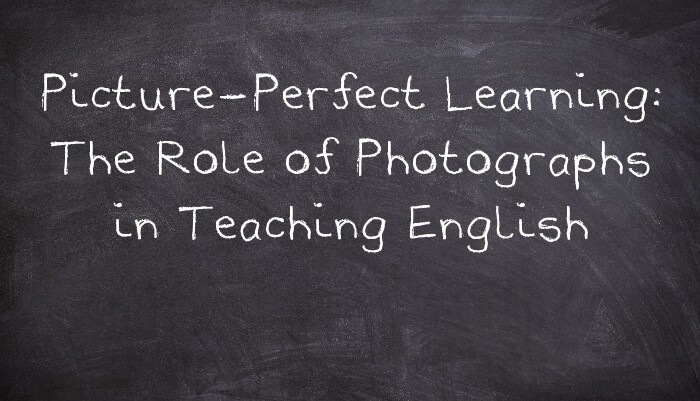Using Photographs in Teaching
I'm writing this article to express some of my thoughts on photography and share with you their educational value. I have started to use photographs in my English classes. I use them as a means to spark discussion and prod my students in producing language.
Photographs have layers of meaning and can be classified in a number of ways depending on the context and the intent.
Personal Connection with Photography
On a personal note, photography serves as a channel that bridges my inner thought processes with a creative artistic outlet. It is a form of self-expression. Photography allows me to express in a non-verbal way my emotions, thoughts, ideas, and feelings as well as focusing on taking aesthetically appealing photographs. I've found that photography is an intensely personal experience. It's me and the camera.
I've been drawn to capture on film images that surround me and express aspects of my urban existence. They record my changing urban landscape and fleeting moments in time. With regards to my exhibitions, besides being a celebration of the art form, they direct the gaze of the spectator to ponder the theme/subject of my show.
Utilising Photographs for Teaching Various Tenses
Photographs can be used to teach various tenses depending on the level of the students. Here are some examples:
- Present tense: What do you see in the photograph? What do you remember of the day? Who are the people in the photograph? Why is this photograph special to you?
- Present Continuous: What is happening in the photograph? What are the people doing? What are the people wearing? How are they feeling?
- Simple Past: Who took the picture? What happened? Why did you choose this particular photograph to write about? Why did you take this photograph?
- Pass Continuous: What were the people doing?
- Passive Voice: Where was the photograph taken? When was it taken?
Family Photographs as Educational Tools
Family photographs provide a visual record of a family's existence. They can serve as a jumping point for narrative writing. They serve as a testament to a family's history. They document and record a lived experience. They tell a story. They anchor the past and contextualize experience. They offer proof of past experience. They capture important events that mark one's life. Many tend to record information about the significant events which document the passage of life such birthdays, parties, graduation ceremonies, weddings, births and so on. They allow us to travel back in time and remember details about people, places visited, and significant events. They anchor memory. They prod us into remembering a bygone era and the way things were. They are also portable records which make them ideal for classroom use.
Photographs as Reminders of Humanity and Inhumanity
Some photographs more than others remind me of man's capacity to sink to the lowest depths of inhumanity and inflict pain and suffering on a catastrophic level. They are reminders of man's capacity to commit evil. They become larger than life and become part of our collective consciousness and assist in the process of remembering acts of injustice.
Photographic images of the holocaust and Nazi atrocities remind me of a time when being of the Jewish faith, or a gypsy, or a homosexual were grounds for extermination. Photographs help us to remember the past and man's inhumanity to man, which continue to rear its ugly head to his day. Look at Iraq. They can also help us to remember man's humanity to man (i.e. Mother Teresa). They anchor historical reality. Some photographs more than others have the power to haunt and penetrate and resonate in the psyche.
Photographs as a Gateway to Historical Reality
On another personal note, photographs have allowed me to travel to another time and explore historical reality. They allow me to penetrate the surface of the image and enter the concrete details of previous existences. Photographs assist in the process of remembering. They preserve a specific reality. And as such they have intrinsic value in and of themselves.
Photographs have social uses, are a tool for education and can be used to provoke discussion on contemporary issues or historical reality. They can be used as a writing tool to teach students how to write personal narratives and reflect on past experiences using a second language. Perhaps, you might consider their use in your classroom.
